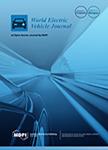版权所有:内蒙古大学图书馆 技术提供:维普资讯• 智图
内蒙古自治区呼和浩特市赛罕区大学西街235号 邮编: 010021

作者机构:Jiangsu Univ Automot Engn Res Inst 301 Xuefu Rd Zhenjiang 212013 Peoples R China Beijing Inst Space Launch Technol Beijing 100076 Peoples R China Lingyun Ind Co Ltd Shanghai 201708 Peoples R China Hebei Prov Automot Safety Parts Technol Innovat Ct Zhuozhou 072750 Peoples R China Jiangsu Univ Sch Management 301 Xuefu Rd Zhenjiang 212013 Peoples R China
出 版 物:《WORLD ELECTRIC VEHICLE JOURNAL》 (World Electr. Veh. J.)
年 卷 期:2025年第16卷第2期
页 面:56-56页
核心收录:
学科分类:0808[工学-电气工程] 08[工学] 0823[工学-交通运输工程]
基 金:National Natural Science Foundation of China State Key Laboratory of Intelligent Green Vehicle and Mobility [KFY2409] Key Laboratory for Crop Production and Smart Agriculture of Yunnan Province [2023ZHNY02] Key Laboratory of Agricultural Equipment Technology for Hilly Ministry of Agriculture and Rural Affairs [2023KLOP05] Opening Project of Automotive New Technique of Anhui Province Engineering Technology Research Center [QCKJ202201A] 51705213
主 题:simultaneous localization and mapping lidar multi-sensor fusion deep learning development tendency
摘 要:Simultaneous localization and mapping (SLAM) is one of the key technologies for mobile robots to achieve autonomous driving, and the lidar SLAM algorithm is the mainstream research scheme. Firstly, this paper introduces the overall framework of lidar SLAM, elaborates on the functions of front-end scan matching, loop closure detection, back-end optimization, and map building module, and summarizes the algorithms used. Then, the classical representative SLAM algorithms are described and compared from three aspects: pure lidar SLAM algorithm, multi-sensor fusion SLAM algorithm, and deep learning lidar SLAM algorithm. Finally, the challenges faced by the lidar SLAM algorithm in practical use are discussed. The development trend of the lidar SLAM algorithm is prospected from five dimensions: lightweight, multi-sensor fusion, combination of new sensors, multi-robot collaboration, and deep learning. This paper can provide a brief guide for novices entering the field of SLAM and provide a comprehensive reference for experienced researchers and engineers to explore new research directions.